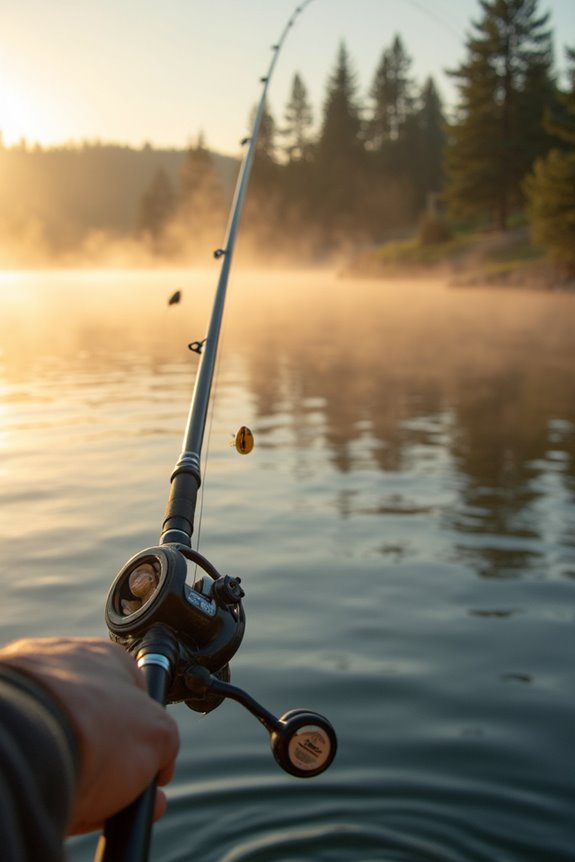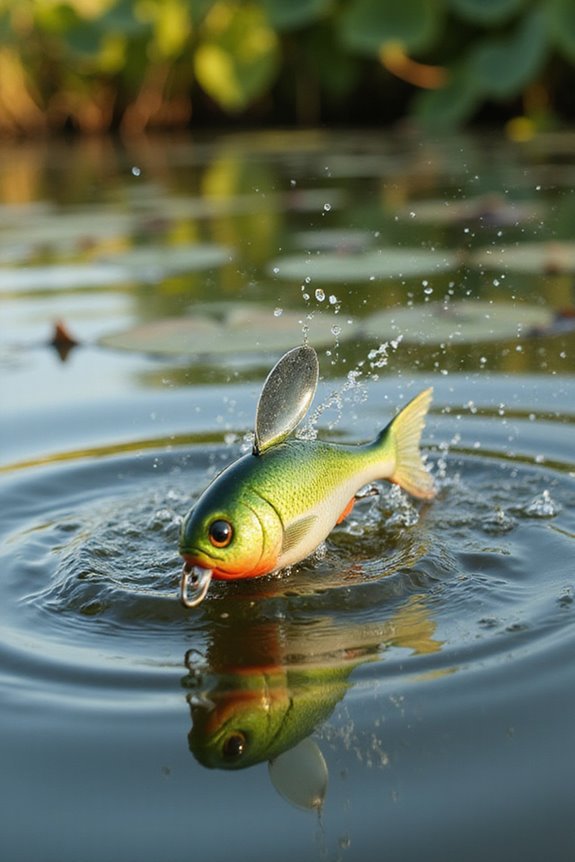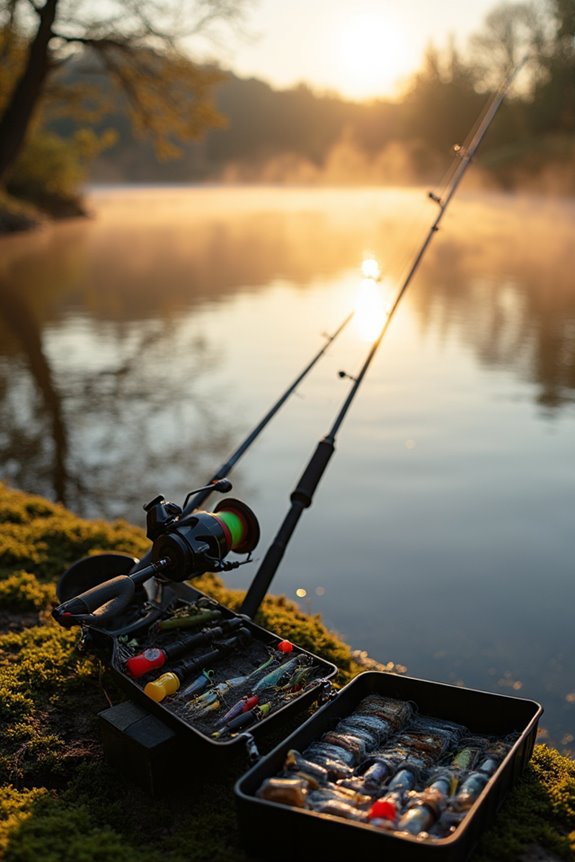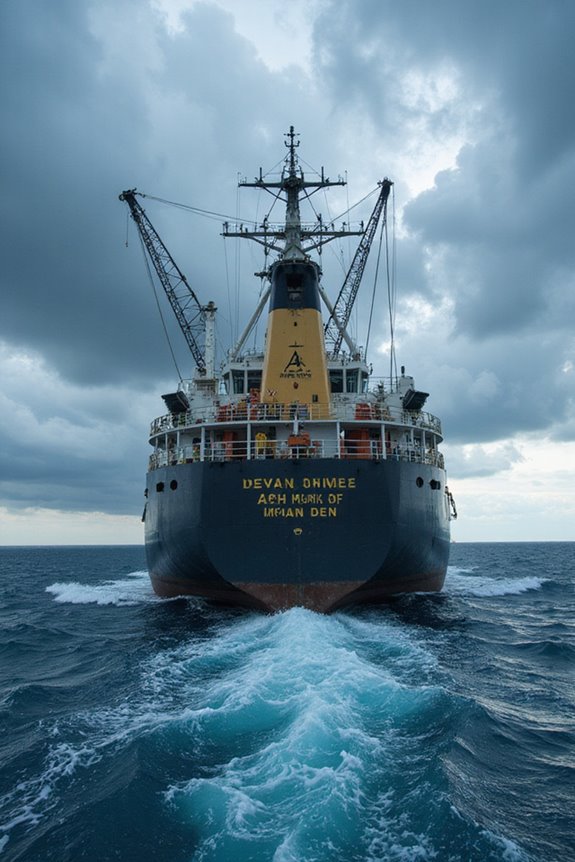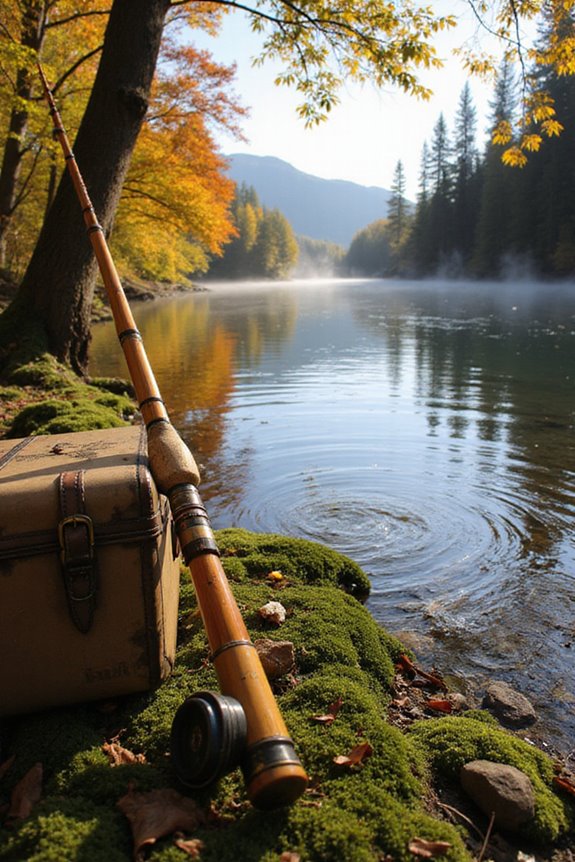To cast a fishing rod effectively, first select the right gear. Use a spinning reel and a 4- to 12-pound-test line for fresh waters. Hold the rod at waist level, guarantee the line hangs 10 to 18 inches below the tip, and open the bail arm. Pull the rod back to 10 o’clock, then cast forward to 2 o’clock, releasing the line smoothly. Practice various casting techniques to enhance your accuracy and distance, which you’ll find beneficial in your fishing outings.
Key Takeaways
- Hold the rod at waist level, with the reel underneath for better control and accuracy during the cast.
- Open the bail arm and let the line hang 10 to 18 inches below the rod tip before initiating your cast.
- Use a smooth forward motion, pulling the rod back to about 10 o’clock and moving it forward to 2 o’clock while releasing the line.
- Practice casting drills focusing on a straight line target to enhance your accuracy and consistency.
- For longer distances, use a fast action rod and lighter line, ensuring proper timing and technique during your cast.
Preparation and Equipment Setup
When gearing up for a successful fishing trip, the first step is selecting the right equipment, which can make a significant difference in your experience. For rod selection, I usually choose between spinning, baitcasting, or closed-face rods, depending on the species I’m targeting and my casting style. Next, I pick reel types that match my skill level; open-bail spinning reels are great for beginners. It’s essential to select a fishing line that suits the conditions, like a 4- to 12-pound-test monofilament for freshwater fishing. I always guarantee I tie my lures securely using an improved clinch knot. Finally, I check the length and power of the rod to match my casting distance and environment effectively. Having a quality tackle bag with multiple compartments helps keep all your gear organized and easily accessible during your fishing expedition.
Basic Casting Technique
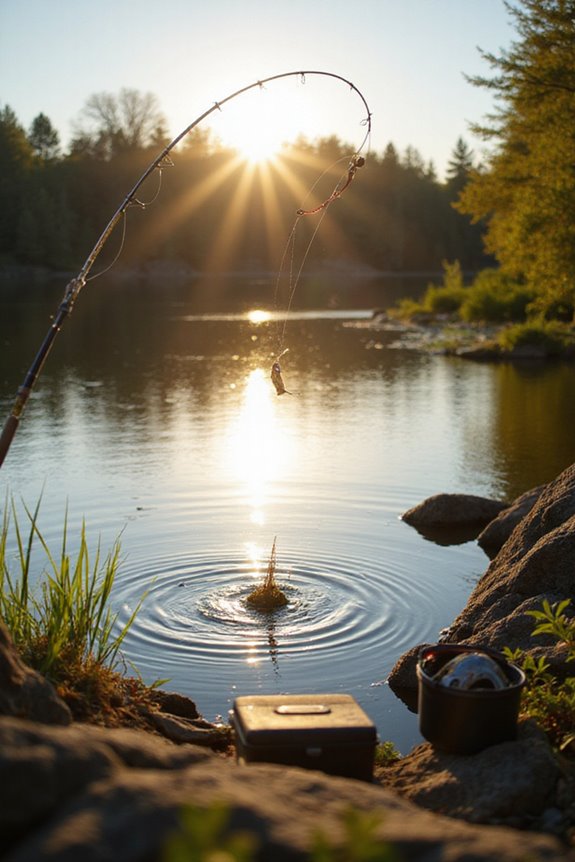
Mastering the basic casting technique is crucial for any angler aiming to improve their fishing skills. Start by holding the rod at waist level, which enhances control and accuracy. Position the reel underneath the rod, with the reel stem resting naturally between your fingers. Ascertain the line hangs 10 to 18 inches below the rod tip before casting. Use your forefinger to hook the line, and open the bail arm manually prior to casting. Pull the rod back to about 10 o’clock, then execute a fluid forward motion toward your target at 2 o’clock. Release the line as the rod tip moves forward. Practice these casting fundamentals in an open area to build muscle memory and increase your proficiency. For optimal pier fishing results, select a medium to medium-heavy rod between 7 to 10 feet in length that provides the necessary strength and flexibility for various casting situations.
Advanced Casting Styles and Methods
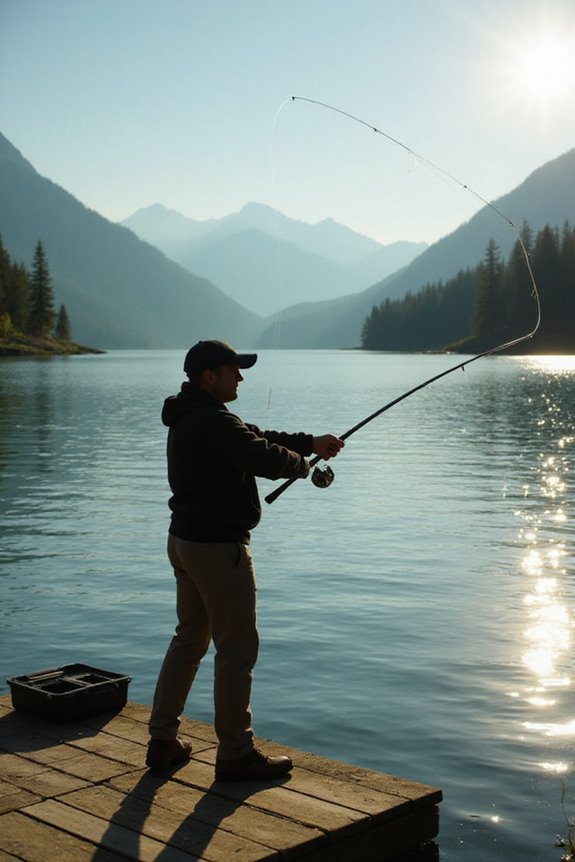
Advanced casting styles and methods can greatly enhance your fishing experience, especially in challenging environments. Sidearm casting allows for better control by keeping the rod parallel to the ground, perfect for tight spots under docks or overhanging trees. The roll cast, often used in fly fishing, helps you cast in restricted spaces by rolling the line off the spool. Pitching and flipping are excellent for stealthily placing lures in heavy cover, like weeds or docks. The reach cast improves accuracy by adding a wrist flick, while the puddle cast creates slack in the line, ideal for fishing wary trout. Using bladed jigs lures can significantly improve your casting results when targeting bass in both clear and murky waters. Mastering these techniques can considerably increase your success on the water.
Tips for Casting Accuracy
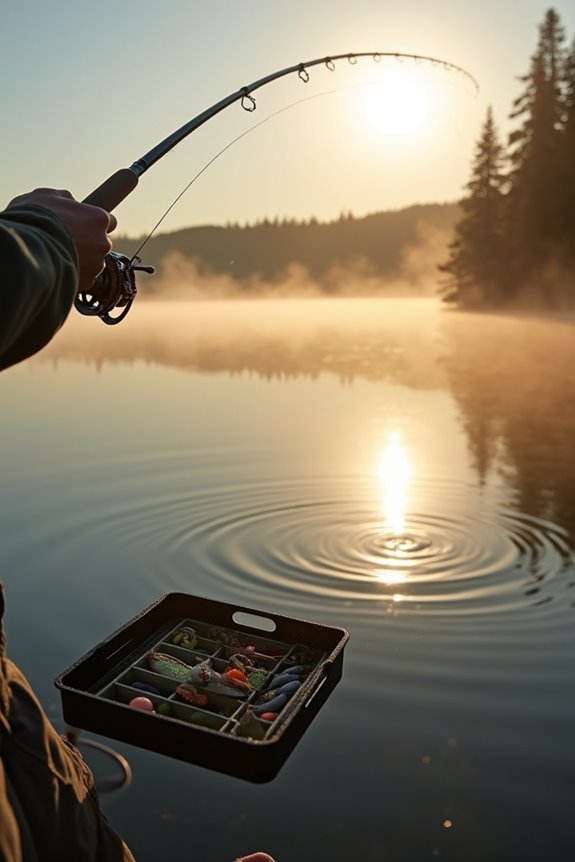
Achieving casting accuracy is an essential skill that can greatly impact your fishing success. To enhance precision, I always align the rod tip vertically with my target before casting. Using the top third of the rod, I make quick, sharp casts to minimize line deviation. To improve my accuracy, I practice casting drills, focusing on a straight line target like a garden hose. I also concentrate on my mental focus, keeping my eyes on the target throughout the cast. Regularly inspecting my gear guarantees that the rod guides are free of nicks, which can affect line flow. By maintaining a clean, well-lubricated reel and using braided line, I further boost my casting accuracy for successful fishing trips.
Improving Casting Distance
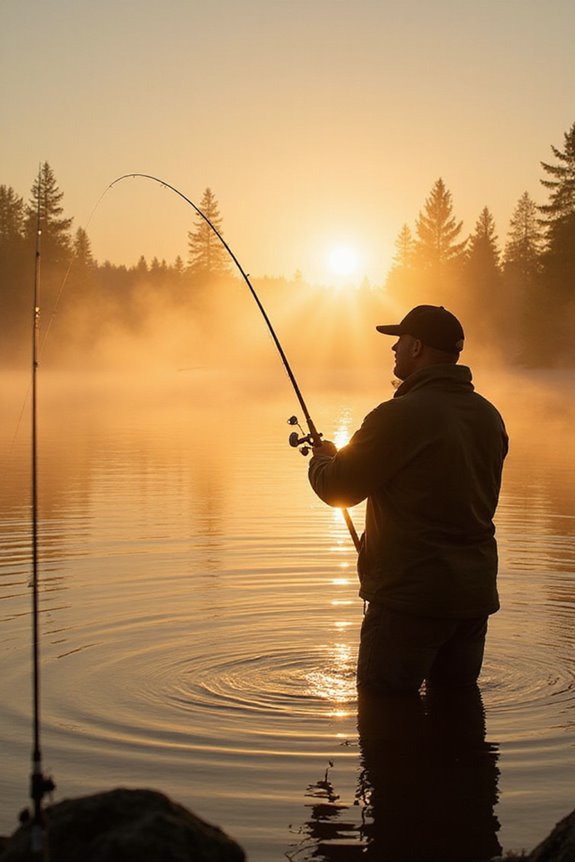
When it comes to improving casting distance, selecting the right equipment is essential. I recommend using a fishing rod with a fast action, measuring between 7 to 9 feet, which enhances energy transfer. Pair it with a high-quality baitcasting reel designed for distance, ensuring smooth bearings to reduce friction. When choosing line, opt for lighter braided or fluorocarbon options, as they cut through air and water resistance. It’s vital to match your lure weight with your rod’s power for peak performance. Consider environmental conditions, casting into the wind to maximize distance. Finally, practice your technique, focusing on a smooth motion and proper timing, as casting psychology plays a significant role in achieving longer casts.
Frequently Asked Questions
What Is the Best Time of Day to Fish?
I’ve found that midday can be surprisingly effective for fishing, though I still enjoy early morning and evening bites. It’s all about adapting to the conditions and being patient for the best results.
How Do I Choose the Right Fishing Spot?
Choosing a fishing spot’s like finding a hidden treasure. I look for water depth and surrounding vegetation, knowing that the right combination shelters fish. With patience, I discover the jewels beneath the surface waiting for me.
What Types of Bait Are Most Effective?
When I fish, I find live bait like minnows and crickets incredibly effective. However, artificial lures, especially soft plastics, also work wonders. It really depends on the fish species and water conditions I’m facing.
How Do I Know When I’ve Caught a Fish?
When I’ve caught a fish, I notice distinct catch signs like sudden tension on the line or erratic movements. Observing fish behavior, such as splashes or heavy resistance, helps me confirm I’ve hooked something.
What Should I Do After Catching a Fish?
After I catch a fish, I guarantee proper handling by quickly bleeding and cleaning it. If I’m doing catch and release, I handle it gently to minimize stress and maximize its chances of survival.

